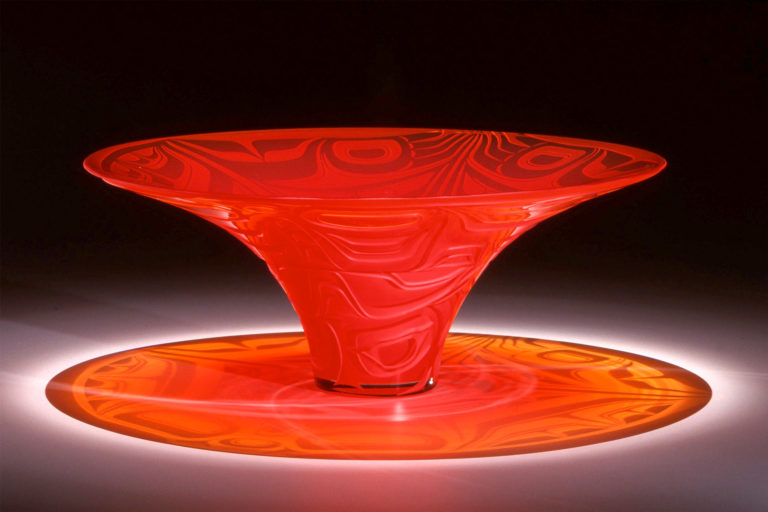
Arts of the Pacific Northwest
The Northwest Coast Cultural Area of North America stretches from the Yakutat Bay in Alaska to the Columbia River in Oregon. The densely forested area is over 1,000 miles long but only extends about 200 miles east of the Pacific Ocean. The region is blessed with an abundance of natural resources and a relatively mild temperate climate. As a result, it has been inhabited for thousands of years.
The numerous tribes who call the Northwest Coast home lived in permanent villages along the coast. Unlike similar groups throughout North America, they did not practice agriculture. Instead, they relied on hunting, fishing, or gathering edible plants. Each village within a given tribe was relatively independent. However, they would often form alliances with neighboring villages for mutual protection against enemies or as insurance against an insufficient salmon harvest. Consequently, they had ample time to develop non-subsistence activities, like producing art. Thus, a class of artists and artisans developed among the highly stratified societies of the Northwest Coast.
The art of the Northwest Coast typically consists of highly stylized designs that represent people, animals or supernatural beings. The art style usually centers around form lines—lines of varying width used to delineate design fields. These design fields themselves are often rectangular with rounded corners or ovoid. These ovoids are typically used to circumscribe animal parts. However, many sculpted objects, like bowls, often take on an overall ovoid form. In fact, Northwest Coast sculptures are highly elaborate, and feature works in wood, bone, horn and other materials. Many of the objects are meant to be viewed from different angles and in motion.
The production of art in the Northwest Coast waned after European contact in the 18th century. However, in the mid-20th century Northwest Coast art experienced a great renaissance. Now, there is more demand than ever for Northwest Coast art—both among native and non-native groups.
Arts of the Pacific Northwest Coast closes June 3. It will be replaced with Arts of the Southwest, June 12.
[Pictured: Glass Sculpture by Preston Singletary (b.1963) Tlingit. 15” Diameter.]
